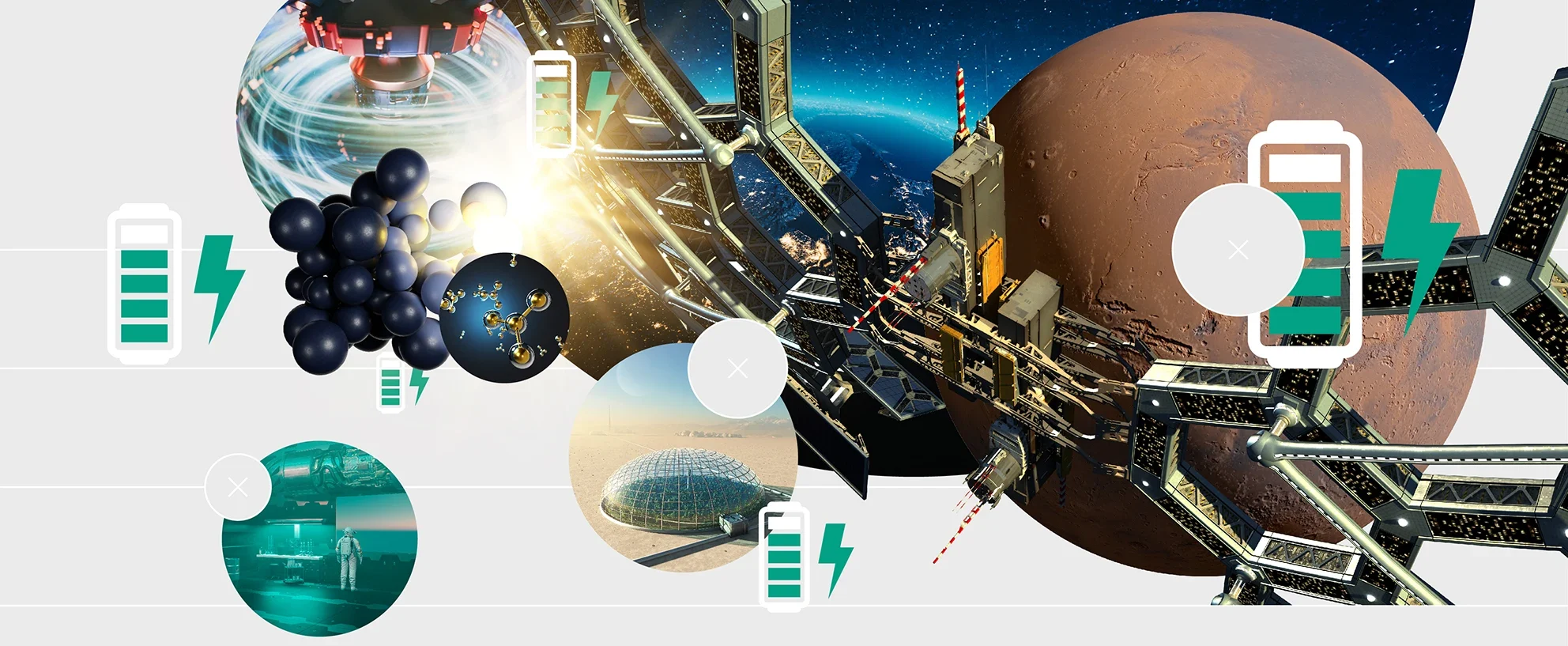Future Horizons:
10-yearhorizon
Construction of a new International Space Station begins
25-yearhorizon
Lunar habitation approaches feasibility
For example, these conditions ought to allow for higher-quality versions of pharmaceuticals, metals or semiconductors that can outperform those made on Earth.11 That should mean that large spare-part inventories for space-based operations will become a thing of the past.
The most important manufacturing limitation is the availability of power. A key enabler will be the availability of larger power sources both in orbit and on the Moon. Kilowatt power sources are expected in the next two to three years, but megawatts are needed for industrial-scale production. Finding ways to establish these is an important goal for space agencies and commercial operators such as Blue Origin.
Larger power systems will enable the manufacture and construction of bigger structures like remote sensing antennas, the building blocks for human habitation modules and semiconductor fabrication.
The longer-term goal is to find ways to make use of resources on Mars and near-Earth asteroids, which may be accelerated by construction of a Moon base or the use of lunar water ice, which can be readily turned into oxygen and hydrogen for propulsion and life support.
Space manufacturing - Anticipation Scores



